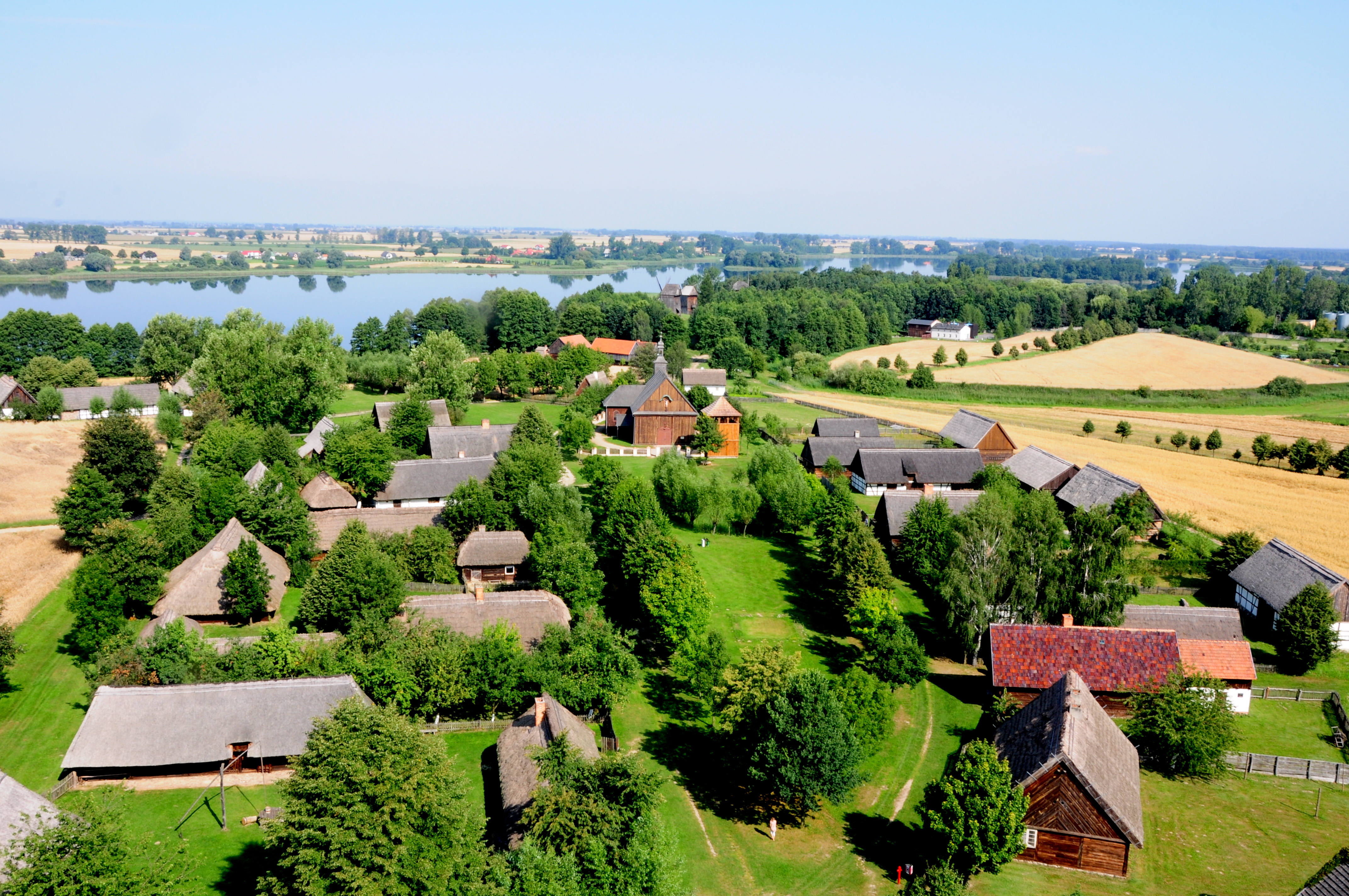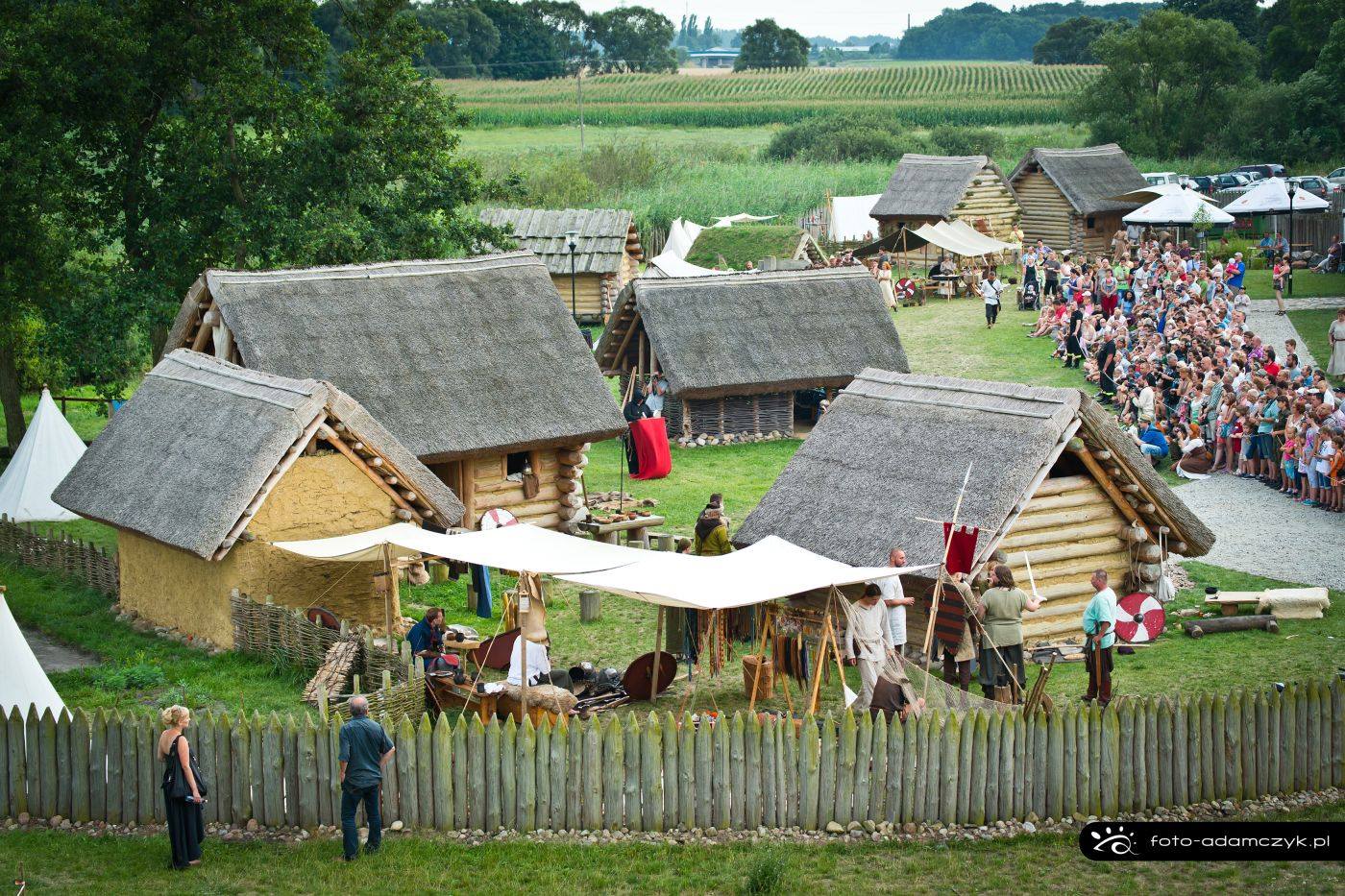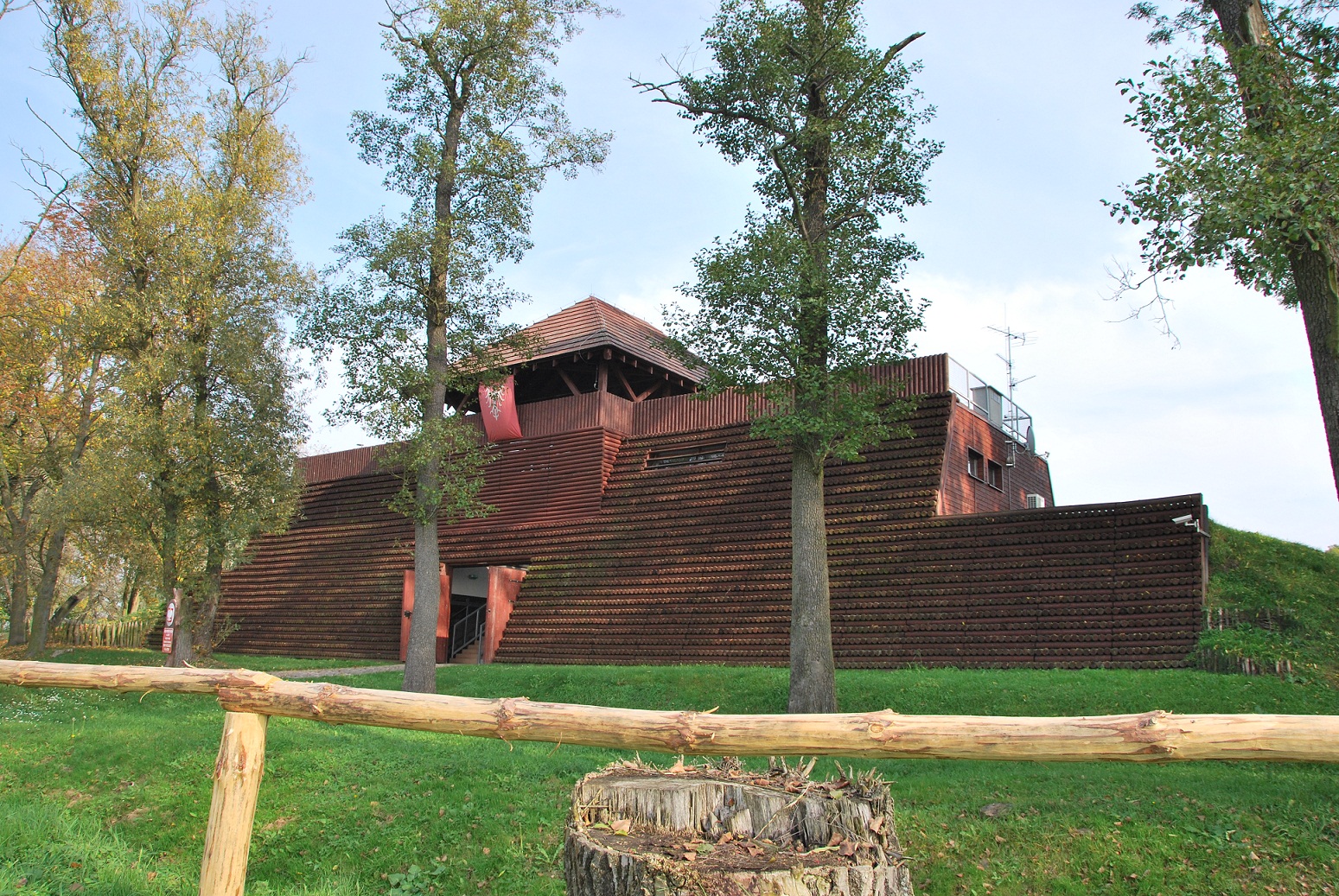|
The Museum of the First Piasts at Lednica was established in 1969 as the Museum of the Beginnings of the Polish State. In 1974 it was given its present name. The main reason behind the origin of the Museum was to protect monuments of Ostrów Lednicki – a palatium with a chapel and a stronghold – as well as to carry out scholarly research on them. The origin of the new centre and the creation of a landscape vicinity around Lake Lednica became a stimulus for the establishing of the Wielkopolska Ethnographic Park in 1975 in Dziekanowice. It was designed as a reconstruction of a 19th c. Greater Poland village, encompassing examples of traditional rural architecture. The Branch which came into existence in such a way become part of the Museum and in 1982 it was opened to visitors. Three years later the institution was provided with another Branch, which exists today as the Archaeological Reserve – Early Piast Stronghold in Giecz. It was established in 1963 as a local post of the Archaeological Museum in Poznań under the name of the Piast Stronghold in Giecz. Its aim was to protect remains of the stronghold which were discovered in the years 1949-1953 and which became an archaeological sensation of that time. In 1988 the Lednica Landscape Park was established in the area around Lake Lednica. Its aim is to protect landscape monuments. In 1997 the Archaeological Reserve – Stronghold in Grzybowo also became a Museum Branch. In 2010, a stylised exhibition-storage building with research ateliers was constructed there. The Museum of the First Piasts at Lednica is the largest museum institution of the Marshal’s Office of the Wielkopolskie Voivodeship. Mission The mission of the Museum of the First Piasts at Lednica is to preserve in the collective memory the knowledge of the significance of Ostrów Lednicki and other Early Medieval strongholds in Greater Poland from the period of the formation of the Polish state. It is also intended to provoke visitors’ interest in the history of Greater Poland’s countryside with its 19th c. positivist tradition, which transformed Greater Poland into the most culturally developed region in the Polish lands at that time. Aims One of three rudimental and equivalent aims of the Museum is to take care of the Early Medieval strongholds situated in a unique historical space and an attractive natural environment and to protect artefacts acquired in the course of archaeological research, that is, finds which are in the Museum’s care. Another aim is to reconstruct typical buildings of 19th c. Greater Poland’s countryside with complete furnishings of homesteads. The third aim is to popularise in attractive forms the knowledge of the priceless monuments of the Polish cultural heritage and the natural environment which are in the Museum’s care and which have been almost completely unchanged by civilisation’s activities since the 10th c. The Museum is composed of four Branches which are independent exhibition bodies.
|
|
The Early Piasts Residence on Lednica Holm
The residence of the first Piasts on a holm on Lake Lednica. The most probable site of baptism of the first Polish rulers, with perfectly preserved tenth-century ruins of the palatium and the chapel of Duke Mieszko I with tenth-century baptismal basins. Visible under the water are the remains of two wooden tenth- century bridges that connected the island with routes to Poznań and Gniezno. The ramparts of the stronghold are well-marked in the landscape of the island; in the suburbium you can visit a reconstruction of a wooden homestead. The ferry crossing to the island is a great attraction for the visitors.
Dziekanowice 32, 62-261 Lednogóra
TICKETS 22 / 16 PLN
|
|
|
|
The Wielkopolska Ethnographic Park in Dziekanowice
A must-see unique reconstruction of the nineteenth century Wielkopolska village, manor house and farm. Examples of constructions from historic Wielkopolska (from the seventeenth to twentieth centuries), a typical village layout, complete household furnishings and interior decorations with original furniture, household appliances, handicraft tools and agricultural machinery. In the church from Wartkowice (from 1719), you can admire decorations related to the liturgical year and folk tradition. A gallery of contemporary amateur sculpture from Wielkopolska can be visited in the nineteenth-century mill building from Wierzenica.
Dziekanowice 23, 62-261 Lednogóra |
 |
|
The Archaeological Reserve – Early Piast Stronghold in Giecz
One of a few so-well-preserved early Piast strongholds with the late tenth-century remains of the foundations of an unfinished palatium with a chapel and the relics of a stone stronghold church dating from the early eleventh century. Impressive wooden-earth ramparts. In the village of Giecz, a single-nave Romanesque church of the Assumption of the Blessed Virgin Mary and St Nicholas (twelfth/thirteenth century). Visit a permanent exhibition (Terra sancta. Giecz in the Piast monarchy) to see the artefacts recovered in the course of excavations carried out in the stronghold and in its vicinity. Opposite the stronghold is a wooden educational settlement, a perfect location for workshops for young people and outdoor events.
Grodziszczko 2, 62-015 Dominowo
TICKETS 12 / 8 PLN
|
 |
|
The Archaeological Reserve – Stronghold in Grzybowo
Remains of one of the largest strongholds in Wielkopolska dating from the first half of the tenth century with well-preserved ramparts. A modern exhibition space presents the knife – an item that facilitates many everyday activities. We tend to overlook its appearance, shape or decorations on the handle, or think about its origin. A universal tool, the knife has accompanied people for hundreds of thousands of years. How was it before? When did the knife first appear? What did it look like? What was it made of? How was it used? If you want to know the answers, visit the permanent archaeological exhibition Knife – an original object depicting knives from three periods: the Stone Age, the Bronze Age and the Iron Age.
Grzybowo 10A, 62-309 Grzybowo
TICKETS 10 / 5 PLN
|
 |